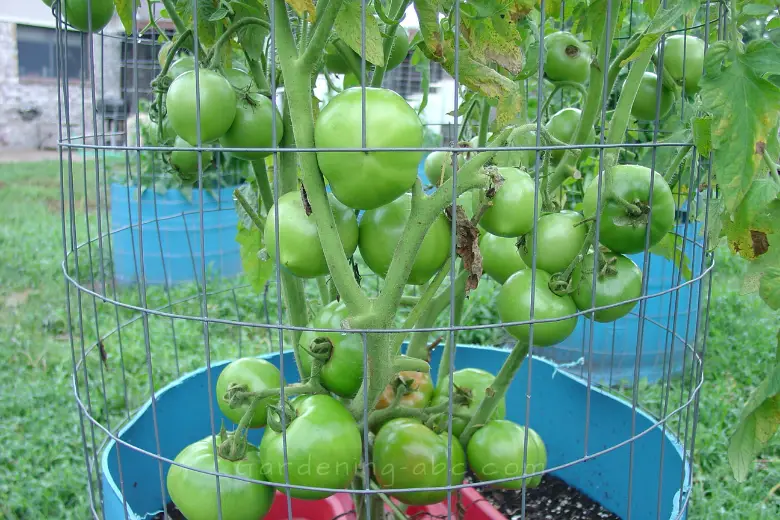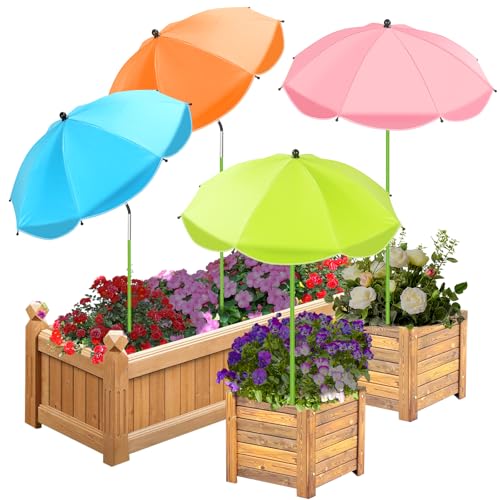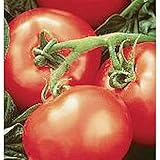We use affiliate links to run our site. When you buy through links on our site, we may earn an affiliate commission, without any added cost to you. Learn more
Sunburn on tomato plants can be frustrating for any gardener. One day, your tomatoes are thriving in the summer sun, the next their leaves look dry, shriveled, and browned. Suddenly, the fruit isn’t quite as plump and tasty either.
Although no plant is immune to the intensity of summer heat, there are several ways to prevent and treat sunscalded tomato plants. With a little planning and diligent care, you can still reap a bountiful harvest.
In this blog post, we’ll cover the common causes of sunburn, what sunburned leaves look like, and most importantly, how to avoid sunscald on your precious tomato crop.
With a few preventative measures, you can still harvest platefuls of plump tomatoes this season. Get ready to outsmart the sun and win the battle against sunscalded tomato plants!
Common Causes of Tomato Leaf Problems
Tomatoes need at least 6-8 hours of sunlight per day, but intense midday sun can easily burn their leaves and fruit. Sunburn most often occurs when the weather quickly changes from cloudy to hot and sunny. Plants have no chance to adjust their photosynthesis and transpiration processes.
Lack of wind circulation is another culprit. Plants surrounded by other vegetables or crowded cages don’t receive adequate airflow. Staking or trellising tomatoes opens their foliage to a light breeze, which helps regulate temperature.
Insufficient leaf coverage around the tomatoes also leads to sunburn. Aggressive pruning of leaves exposes the delicate fruit to direct sun. While pruning helps prevent fungal diseases, it requires balance and strategy.
Tomato Fruit Problems Due to Hot Weather

Sunscald on tomatoes leads to aesthetic and flavor problems. A telltale sign is a distinct line between the burned yellow/white area and the healthy green flesh. Fruit may ripen unevenly and develop flat-tasting zones.
Tomatoes with blossom end rot also indicate too much sun intensity. This disorder causes brown sunken lesions on the bottom of the fruit. A dark leathery patch forms where the tomato rested on the soil.
Cherry tomatoes seem especially prone to sun damage. Their small size receives direct sun exposure, quickly escalating to scorched brown spots.
Sunburned Cherry Tomato Leaves
With cherry tomatoes, focus on prevention since their leaves and fruit are so delicate. Make sure these vulnerable plants receive filtered sunlight if possible. Dappled shade from larger vegetables like pole beans and corn helps protect them.
Choose heat-tolerant cherry tomato varieties like ‘Sun Gold’, ‘Sungold’, and ‘Sweet Treats’. Supplement water during dry spells so they are hydrated against sun and heat stress.
Can You Eat Sunburned Tomatoes?
Sunburned tomatoes are still safe to eat! Simply cut away the damaged parts. The flesh underneath is usually unaffected. Prioritize harvesting sunscalded fruit first, before flavor suffers more.
How To Help Sunburned Plants And Prevent Sunburned Leaves
If your tomato plants already show signs of sunscald, don’t panic! Here are ways to nurse them back to health and prevent future damage:
With a few simple practices, you can avoid sunburn on tomato plants altogether:
Use a Shade Cloth and Keep Fruit Shaded
One of the most effective ways to prevent sunscald on tomatoes is to provide supplemental shade. Install shade cloths that filter 30-50% of sunlight over your tomato plants. These clothes diffuse the harshest midday rays but still allow sufficient light for growth.
For further protection, ensure the developing tomatoes themselves are shaded by foliage. Leave at least 5-6 layers of healthy leaves above each tomato, creating a natural umbrella against sun damage. Avoid aggressive pruning around the fruit. The leaves act like little shields, preventing direct sun exposure.
Prune Carefully and Don’t Over-prune
While pruning tomato suckers and older growth is beneficial, be careful not to over-prune foliage around the fruit. At most, selectively prune leaves immediately around each tomato to improve air circulation. Otherwise, leave as many healthy leaves intact as possible for shade coverage.
Only remove yellow or brown leaves that are 50% damaged or more. Make pruning cuts where the leaves join the main stem. Disinfect pruners between each cut with isopropyl alcohol to prevent transmitting diseases.
Avoid Overhead Irrigation
When watering tomato plants, avoid using overhead sprinklers or rainfall systems. Wet foliage is more prone to sunscald and diseases like blight.
Instead, irrigate at the base of plants using drip lines, soaker hoses, or directed sprays. Deep watering 1-2 times a week provides moisture for roots while keeping leaves dry.
Use Mulch

A 3-4 inch layer of organic mulch around tomato plants helps cool soil, reduces moisture evaporation, and prevents weeds. Shredded bark, wood chips, straw, or dried leaves are ideal mulch materials.
As they break down over the season, they also add beneficial nutrients to the soil. The cooler root zone created by mulch gives plants relief from hot sun exposure.
Actively Prevent Diseases
Tomato foliage provides critical protection against sunscald. Take steps to prevent leaf loss from common tomato diseases like blights and wilts.
Remove and destroy any diseased-looking leaves immediately. Treat plants with fungicidal sprays at the first sign of infection. Good airflow and crop rotation also limit disease outbreaks.
Grow Heat-Tolerant and Disease-Resistant Varieties
When selecting tomato varieties, look for types labeled as heat-, sun-, or disease-resistant. Tomato cultivars like ‘Sun Leaper’, ‘Solar Flare’, and ‘Sun Master’ are bred to handle summer heat waves.
Disease-resistant hybrids will maintain their leaves better if you do get an outbreak. Matching variety to your climate helps avoid sun-related issues.
Harvest Early
As tomatoes start reddening, pick them promptly. Leaving ripe fruit on the vines in peak sun only escalates sunscald damage. Frequently harvesting encourages plants to keep producing more tomatoes as well.
Prioritize sunburned fruit – use or preserve it right away before the quality declines further. Staying on top of picking reduces risk.
Will Tomato Plants Recover From Sunscald?
With proper treatment, tomato plants can bounce back from the early stages of sunburn. Providing shade, ventilation, moisture, and removal of damaged tissue can all help sunscalded plants recover.
However, severely sunburned tomatoes may struggle to return to peak production. Focus on immediate prevention in future seasons.
How much water do tomatoes need?
Tomatoes require 1-2 inches of water per week from irrigation or rainfall consistently. During hot, dry spells, increase watering to 2-3 times a week.
Use drip irrigation right at the root zone and avoid wetting foliage. A thick mulch helps retain soil moisture as well.
Final Thoughts
Preventing sunburn on tomato plants just takes a little foresight and TLC. Now you’re equipped with numerous techniques to avoid sunscald woes.
Try incorporating more shade, airflow, mulch, and heat-tolerant varieties this growing season. I hope these tips lead to your most successful tomato harvest yet!
Please share this post with fellow gardeners who may be fighting sunburned tomatoes as well. Explore the other articles on our site for more ways to get the most from your vegetable patch.
Most importantly, get out there and start implementing that shade cloth. Your tomatoes will thank you!
FAQS About Tomato Plants
How much sunlight do tomato plants need?
Tomatoes love sunshine! They thrive when they soak up at least 6 to 8 hours of direct, unfiltered sunlight each day. If they don’t get enough sun, you’ll notice fewer tomatoes and slower growth.
How does sunlight affect tomato flavor and quality?
Sunlight plays a crucial role in determining the flavor and quality of tomatoes. When plants receive ample sunlight, they undergo photosynthesis, converting light energy into sugars that contribute to that sweet, rich flavor we all love. Without enough sunlight, tomatoes might end up tasting bland or watery.
Can tomatoes grow in partial sun or shade?
Absolutely, but they won’t be as happy. If they only get 4 to 6 hours of sunlight, they might survive, but you can expect less fruit and a delay in ripening. Small varieties, like cherry or grape tomatoes, are your best bet in these conditions. Just remember, if your plants are getting less than 6 hours of sun, you’re likely looking at a lower harvest.
What happens if tomatoes don’t get enough sun?
If your tomato plants are living in too much shade, they might look pale and leggy — like they’re stretching for sunlight but not quite reaching it. They could produce very few flowers or fruits. They might hang on and survive, but they won’t be thriving like they should!
Is it possible for tomatoes to get too much sun?
Generally speaking, more sun is usually better for your tomatoes. But if temperatures soar consistently above 90°F (32°C), it can lead to issues like poor pollination and fruit set. It’s kind of like baking cookies at too high a temperature — they just don’t turn out right! If you live in a warmer area, consider using a shade cloth during the hottest part of the day to give your plants a break from the heat.
Can I put tomato seedlings in direct sunlight?
Yes! Tomato seedlings love direct sunlight to grow strong and healthy. Think of them as young athletes needing plenty of practice in the sun to build their strength. If they’re kept in the shade, they may become stunted and yellow — definitely not what you want for your future garden stars!
What are the best tomato varieties for partial sun?
If you’re dealing with less sunlight, go for smaller and more vigorous types like cherry or saladette tomatoes — think of varieties like Sungold or Chocolate Cherry. Avoid planting large tomatoes in shady spots; they tend to sulk there.
Will tomatoes thrive in filtered or dappled sunlight?
Not really! Tomatoes don’t perform well with mostly filtered or dappled sunlight; they need direct sun to be at their best. If they only get about 3 hours of direct sunlight each day, don’t expect a bountiful harvest.
What can I do if my garden is shady?
Look for the sunniest spot available — even if that means moving pots around or trimming back some trees. Sometimes a little adjustment can make a big difference! You might also consider growing shade-tolerant crops or focusing on those cherry tomatoes we talked about earlier.
And here’s a fun tip: using reflective surfaces can help bounce more light onto your plants, giving them a little extra boost!
Should I use shade cloth for tomatoes in hot climates?
Yes, definitely! If you’re in an area where temperatures get really high, using a 30% shade cloth during the hottest part of the day can protect your tomatoes from heat stress and help improve your harvest. Think of it as giving your plants a cool umbrella on a scorching day!
Amazon and the Amazon logo are trademarks of Amazon.com, Inc, or its affiliates.

Hi there! My name is Prasenjit and I’m an avid gardener and someone who has grown a passion for growing plants. From my hands-on experience, I have learned what works and what doesn’t. Here I share everything I have learned.



